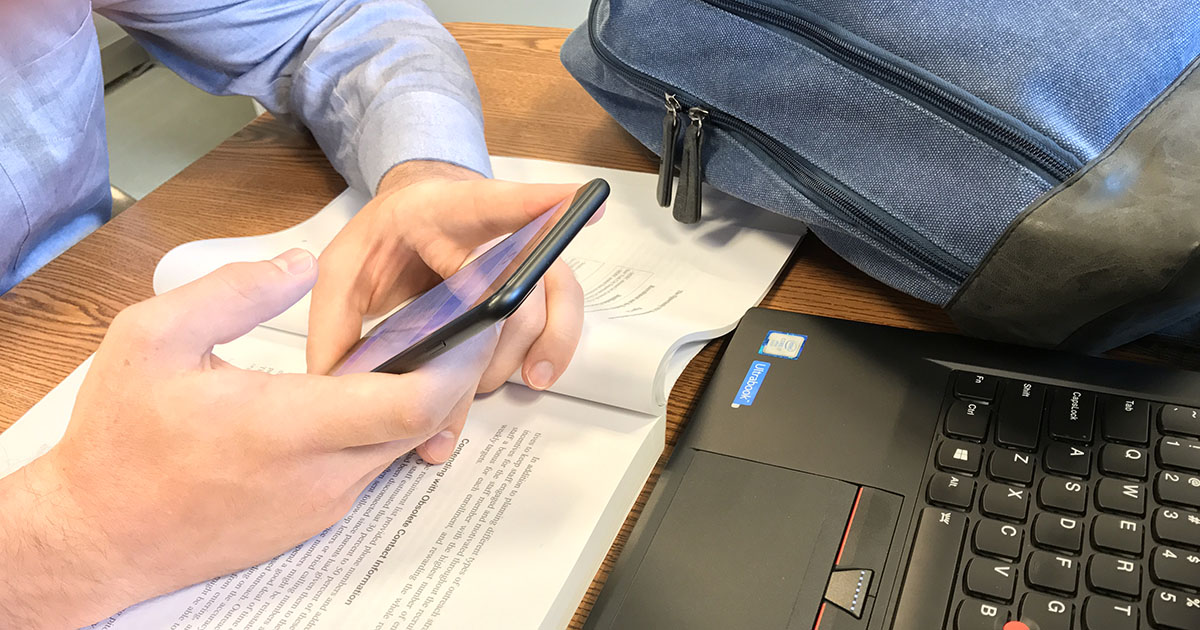A Study of College Transition Text-Based Messaging
Text Ed Demonstration Project

Overview
The college enrollment process is complex and includes many steps. Recent research has shown that short, action-oriented text messages can help people focus on critical tasks at the right times. Building on this promising research, the Text Ed project will develop and test a strategic text messaging intervention at Educational Opportunity Centers (EOCs). One of eight federally funded TRIO programs, EOCs specifically serve low-income individuals age 19 years and older, most of whom are potential first-generation college-goers. EOCs are typically hosted at postsecondary institutions (two-year and four-year colleges) or nonprofit organizations.
This low-cost enhancement to EOC services will consist of a systematic set of automated text messages that are customized to each EOC and personalized for individual participants. Participants will receive messages that are relevant to their support needs at appropriate intervals to help keep them on track in the college enrollment process. Message topics include steps related to completion of the Free Application for Federal Student Aid (FAFSA) and acceptance of financial aid; college application and key preenrollment tasks and deadlines; and resources for overcoming common barriers to enrollment. The text message platform will provide an easy way to connect EOC participants with center staff members, who can answer questions and provide further assistance.
The Text Ed Demonstration Project is funded by the U.S. Department of Education’s Institute of Education Sciences.
Additional Project Details
Agenda, Scope, and Goals
MDRC, in partnership with Dr. Lindsay Page from the University of Pittsburgh, will design, implement, and evaluate a text messaging intervention to help increase postsecondary enrollment and financial aid application completion rates for low-income adults participating at Educational Opportunity Centers (EOCs). EOC grantees will participate in the demonstration from spring 2018 through spring 2020.
The study seeks to determine the impact of this low-cost text messaging intervention by answering the following questions:
- Does providing personalized messages to EOC participants increase Free Application for Federal Student Aid (FAFSA) completion rates and college enrollment rates?
- To what extent does the effectiveness of messaging vary across EOC grantees and client subgroups?
The study will answer the following implementation research questions:
- What are EOCs’ and participants’ experiences with the text messaging? For instance, how often do participants receive automated text messages? How often do participants respond by sending text messages back to their EOC? To what extent do EOC staff members provide individualized text message responses to incoming participant messages?
Design, Sites, and Data Sources
Site selection/inclusive characteristics
Drawing from a national population of 150 Educational Opportunity Centers (EOCs), the study team aims to recruit a sample of approximately 20 EOC grantees and 6,000 EOC participants. The study team aims to have a sample of EOCs that reflects their national diversity in two key dimensions: geographic region and host institution type.
Design
The Text Ed Demonstration Project is an individual-level random assignment study. At participating EOC sites, individual participants will be randomly assigned to either the treatment group (text messaging intervention) or the control group (“business as usual” EOC services without the text messaging intervention). The text messaging intervention will be limited to new EOC participants who have a high school diploma or equivalent and intend to enroll in college by fall 2020. EOC participants will enter the intervention on a rolling basis as they begin their engagement with the EOC.
Data collection will include participant intake forms, text messaging records from the messaging provider, student financial aid data from the Department of Education’s Office of Financial Student Aid, and enrollment data from the National Student Clearinghouse.







